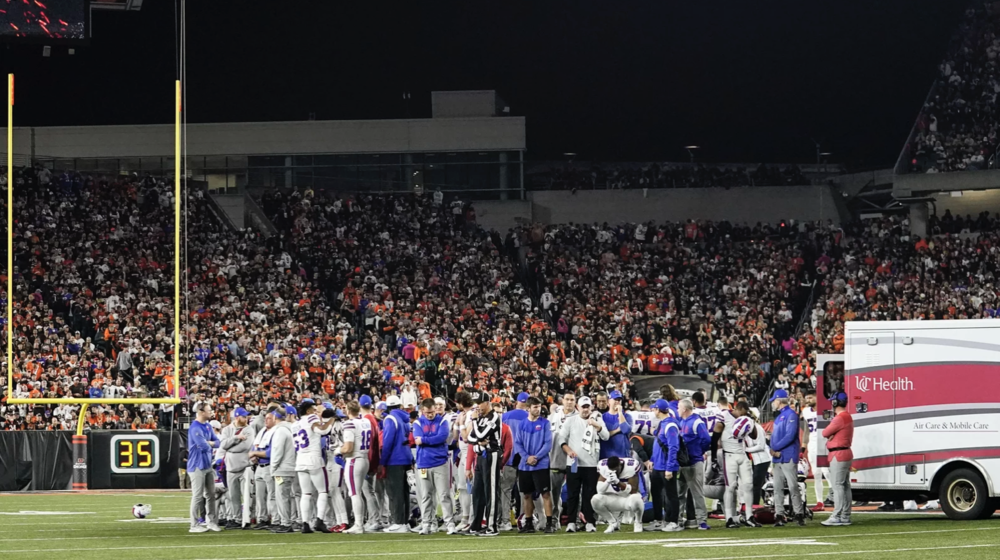
Caption
Buffalo Bills players pray for teammate Damar Hamlin after he collapsed during the first half of their NFL game against the Cincinnati Bengals Monday night. The game has been postponed indefinitely, NFL Commissioner Roger Goodell announced.
Credit: Joshua A. Bickel/AP


